Arduino BoardsArduino is an easy-to-use open platform to create electronics projects. Arduino boards play a vital role in creating different projects. It makes electronics accessible to non-engineers, hobbyists, etc. The various components present on the Arduino boards are Microcontroller, Digital Input/output pins, USB Interface and Connector, Analog Pins, Reset Button, Power button, LED's, Crystal Oscillator, and Voltage Regulator. Some components may differ depending on the type of board. The most standard and popular board used over time is Arduino UNO. The ATmega328 Microcontroller present on the UNO board makes it rather powerful than other boards. There are various types of Arduino boards used for different purposes and projects. The Arduino Boards are organized using the Arduino (IDE), which can run on various platforms. Here, IDE stands for Integrated Development Environment. Let's discuss some common and best Arduino boards. Types of Arduino Boards
Arduino UNO is based on an ATmega328P microcontroller. It is easy to use compared to other boards, such as the Arduino Mega board, etc. The Arduino UNO includes 6 analog pin inputs, 14 digital pins, a USB connector, a power jack, and an ICSP (In-Circuit Serial Programming) header. It is the most used and of standard form from the list of all available Arduino Boards. It is also recommended for beginners as it is easy to use. 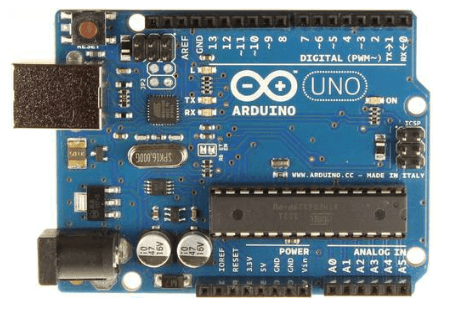
The Arduino Nano is a small Arduino board based on ATmega328P or ATmega628 Microcontroller. The connectivity is the same as the Arduino UNO board. The Nano board is defined as a sustainable, small, consistent, and flexible microcontroller board. It is small in size compared to the UNO board. The devices required to start our projects using the Arduino Nano board are Arduino IDE and mini USB. The Arduino Nano includes an I/O pin set of 14 digital pins and 8 analog pins. It also includes 6 Power pins and 2 Reset pins. 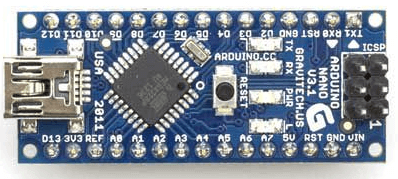
The Arduino Mega is based on ATmega2560 Microcontroller. The ATmega2560 is an 8-bit microcontroller. We need a simple USB cable to connect to the computer and the AC to DC adapter or battery to get started with it. It has the advantage of working with more memory space. The Arduino Mega includes 54 I/O digital pins and 16 Analog Input/Output (I/O), ICSP header, a reset button, 4 UART (Universal Asynchronous Reciever/Transmitter) ports, USB connection, and a power jack. 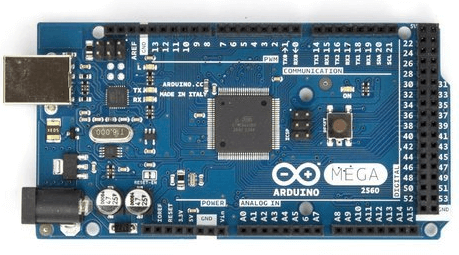
The Arduino Micro is based on the ATmega32U4 Microcontroller. It consists of 20 sets of pins. The 7 pins from the set are PWM (Pulse Width Modulation) pins, while 12 pins are analog input pins. The other components on board are reset button, 16MHz crystal oscillator, ICSP header, and a micro USB connection. The USB is inbuilt in the Arduino Micro board. 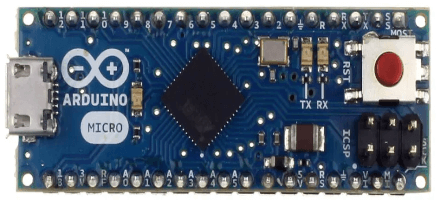
The Arduino Micro is also called as the shrunk version of Arduino Leonardo.
The basic specification of the Arduino Leonardo is the same as the Arduino Micro. It is also based on ATmega32U4 Microcontroller. The components present on the board are 20 analog and digital pins, reset button, 16MHz crystal oscillator, ICSP header, and a micro USB connection. 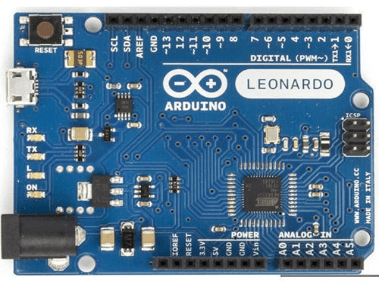
The Arduino Due is based on the 32- bit ARM core. It is the first Arduino board that has developed based on the ARM Microcontroller. It consists of 54 Digital Input/Output pins and 12 Analog pins. The Microcontroller present on the board is the Atmel SAM3X8E ARM Cortex-M3 CPU. 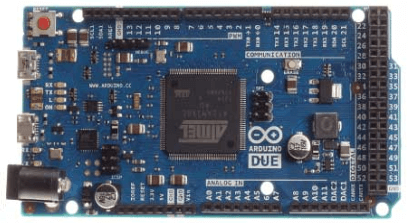
It has two ports, namely, native USB port and Programming port. The micro side of the USB cable should be attached to the programming port.
The Arduino shields are the boards, which can be plugged on the top of the PCB. The shields further extend the potential of the PCB's. The production of shields is cheap. It is also easy to use. There are various types of Arduino shields that can be used for different purposes. For example, the Xbee shield. 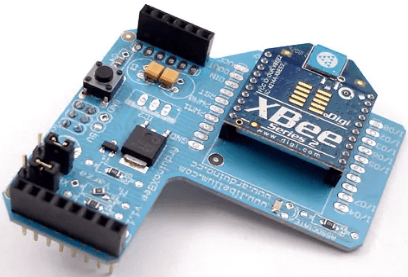
The Xbee shield can be used for wireless communication between multiple Arduino boards over distances upto 300 feet using the Zigbee Module.
The Arduino LilyPad was initially created for wearable projects and e-textiles. It is based on the ATmega168 Microcontroller. The functionality of Lilypad is the same as other Arduino Boards. It is a round, light-weight board with a minimal number of components to keep the size of board small. The Arduino Lilypad board was designed by Sparkfun and Leah. It was developed by Leah Buechley. It has 9 digital I/O pins. 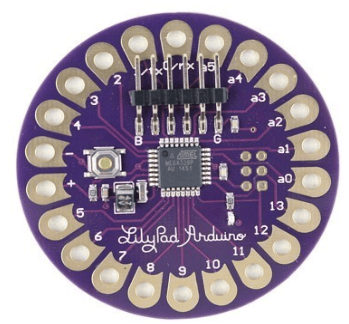
The Arduino Bluetooth board is based on ATmega168 Microcontroller. It is also named as Arduino BT board. The components present on the board are 16 digital pins, 6 analog pins, reset button, 16MHz crystal oscillator, ICSP header, and screw terminals. The screw terminals are used for power. 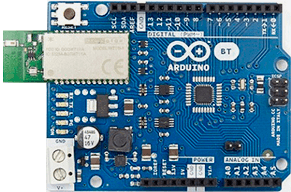
The Arduino Bluetooth Microcontroller board can be programmed over the Bluetooth as a wireless connection.
The Arduino Diecimila is also based on ATmeg628 Microcontroller. The board consists of 6 analog pin inputs, 14 digital Input/Output pins, a USB connector, a power jack, an ICSP (In-Circuit Serial Programming) header, and a reset button. 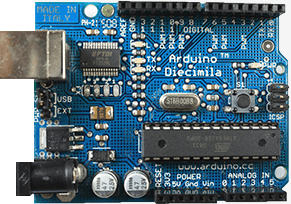
We can connect the board to the computer using the USB, and can power-on the board with the help of AC to DC adapter. The Diecimila was initially developed to mark the 10000 delivered boards of Arduino. Here, Diecimila means 10,000 in Italian.
The Arduino Robot is called as the tiny computer. It is widely used in robotics. The board comprises of the speaker, five-button, color screen, two motors, an SD card reader, a digital compass, two potentiometers, and five floor sensors. 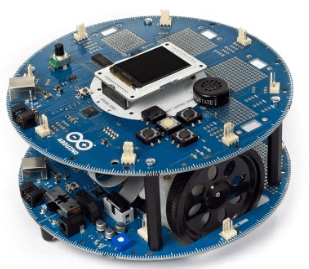
The Robot Library can be used to control the actuators and the sensors.
The Arduino Ethernet is based on the ATmega328 Microcontroller. The board consists of 6 analog pins, 14 digital I/O pins, crystal oscillator, reset button, ICSP header, a power jack, and an RJ45 connection. 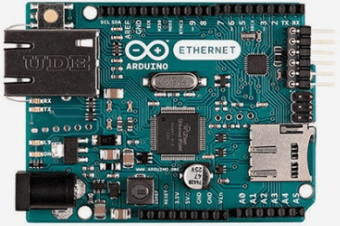
With the help of the Ethernet shield, we can connect our Arduino board to the internet.
The Arduino Zero is generally called as the 32-bit extension of the Arduino UNO. It is based on ATmel's SAM21 MCU. The board consists of 6 analog pin inputs, 14 digital Input/Output pins, a USB connector, a power jack, and an ICSP (In-Circuit Serial Programming) header, UART port pins, a power header, and AREF button. 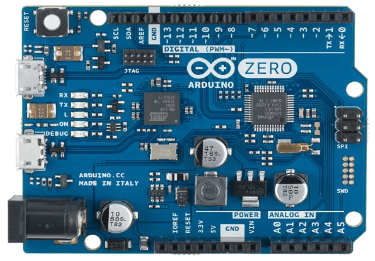
The Embedded debugger of Atmel is also supported by the Arduino Zero. The function of Debugger is to provide a full debug interface, which does not require additional hardware.
The Arduino Esplora boards allow easy interfacing of sensors and actuators. The outputs and inputs connected on the Esplora board make it unique from other types of Arduino boards. The board includes outputs, inputs, a small microcontroller, a microphone, a sensor, a joystick, an accelerometer, a temperature sensor, four buttons, and a slider. 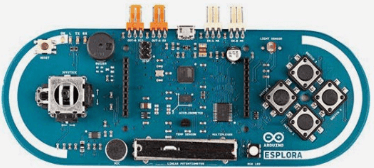
The structure of Arduino Pro Micro is similar to the Arduino Mini board, except the Microcontroller ATmega32U4. The board consists of 12 digital Input/output pins, 5 PWM (Pulse Width Modulation) pins, Tx and Rx serial connections, and 10-bit ADC (Analog to Digital Converter). 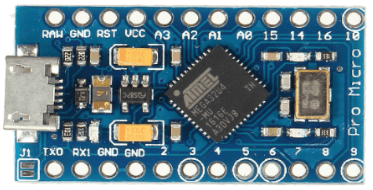
List of available boards in Arduino softwareThe list of boards that we can see in the Arduino software is shown below: 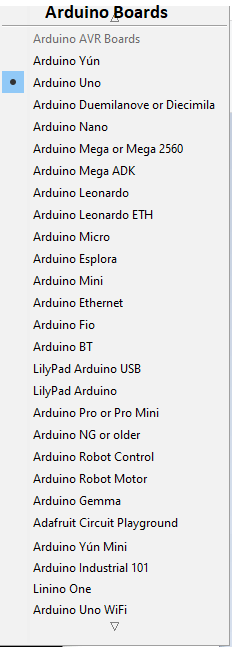
Here, the dot represents the select Arduino board in the Arduino IDE.
Next TopicArduino UNO
|
 For Videos Join Our Youtube Channel: Join Now
For Videos Join Our Youtube Channel: Join Now
Feedback
- Send your Feedback to [email protected]
Help Others, Please Share









